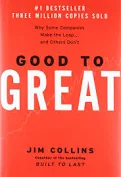White Meat or Dark? Carving Up Blog Content

Uncle Ned prefers a thigh, while your sister Julie has first dibs on a drumstick. Very much like your Thanksgiving turkey, any blog content topic can be approached in a variety of ways. Like guests at the Thanksgiving table, within your target market, each reader’s need for information, products or services was born in a slightly different space and has traveled a different path. Not every approach is going to work for every reader.
In fact, in order to add variety, at Say It For You, we like blog content writers to experiment with:
- different formats – how-to posts, list posts, opinion pieces
- different vantage points, “featuring” different employees and different departments within the company.
- different segments of the customer base
In fact, what I’ve learned over the years of freelance blog content writing, is that most business owners have more than one target audience for their products and services. And, while there may in fact one market segment or demographic that has proven to yield the greatest number of raving fans for them, they also have “outliers” who bring in just enough revenue to matter. What can be done with a business blog, then, is to offer different kinds of information in different blog posts. There is, of course, one over-arching topic (just as all the guests are around your thanksgiving table), but there’s something on your blogsite to satisfy each one’s tastes.
Just as, at most Thanksgiving dinner tables, relatives “catch up” on each other’s doings, on their opinions about what’s going on in the world, and about what they’ve been doing, reading, and thinking – a business blog is a forum of sorts. Providing information about products and services may be the popular way to write corporate blog posts, but blog visitors want to know what differentiates that business, that professional practice, or that organization from its peers. And, just as Dad might tell those gathered at the table about a great documentary he’s seen or a book he’s just read, you can “borrow” the wisdom of others to reinforce your point and add value for readers by aggregating different sources of information in one business blog.
White meat or dark? At your thanksgiving table or in your blog, carve up the content to offer something for everyone.





Follow us online!